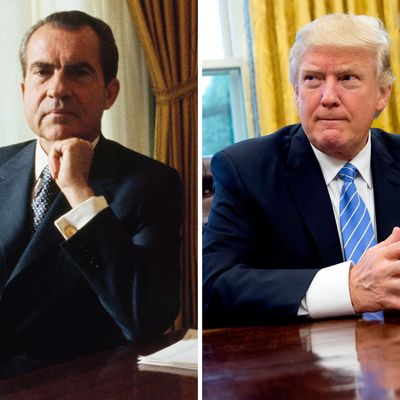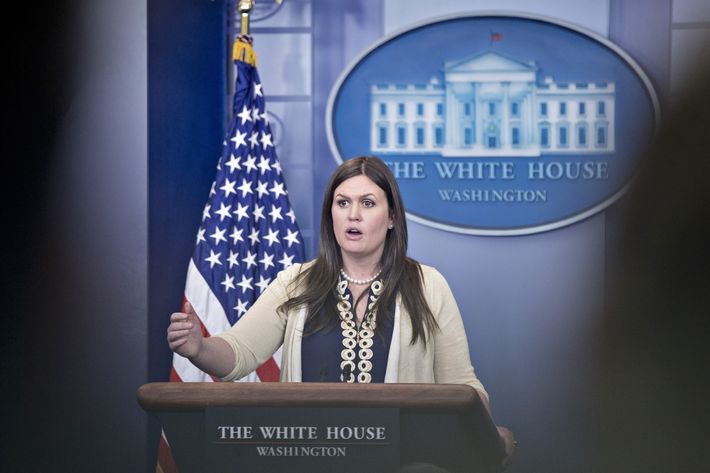
Sprawled across one of the chairs next to the lectern in the White House briefing room, a reporter briefly napped on Wednesday morning. It had been a long night for everyone, as the public, the media, and the administration itself tried to make sense of Donald Trump’s decision to fire FBI director James Comey, who was overseeing an investigation of Russia’s interference in the election that made him president of the United States.
Immediately, Tuesday night’s events drew comparisons to Richard Nixon’s Saturday Night Massacre, in which he fired the special prosecutor investigating Watergate. But no one knew quite what to expect Wednesday; surely, we didn’t expect Henry Kissinger.
And yet there Nixon’s Secretary of State was around 11:30 a.m., seated next to Trump, whom he’s informally advised, in the Oval Office. The meeting was not on his official schedule. If he had been trying to dissuade people from the notion that he’s behaving like Nixon, he could have done so more effectively by throwing his arms over his head and flashing two peace signs. Members of the press pool, a rotating band of reporters that follows the president everywhere, ran into the briefing room with word of the Kissinger meeting, prompting responses like, “What?!” and “Kissinger?!” (He was there, apparently, to discuss Syria.)
Ironically enough, Trump also spent part of his morning trying to distance himself from another Nixon-era friend of his, Roger Stone. In a tweet, he said that they hadn’t spoken in months — though Stone claims to have spoken to him a few weeks ago. It’s worth noting, also, that in Stone’s most recent book, he claims Nixon was the one who “first recognized Donald Trump’s potential to become leader of the free world” after meeting him at Yankee stadium and befriending him.
But the live theater for reporters at the White House didn’t begin until the early afternoon, when Deputy Press Secretary Sarah Huckabee Sanders — filling in for Sean Spicer, who claims to be fulfilling his navy reserve duty for the rest of the week (and was, last night, hiding in some bushes) — began making confounding claims at the podium.

The central theme of the White House’s talking points on Wednesday was that, in fact, Trump had long been dissatisfied with Comey and had been “considering letting Comey go since the day he was elected” — yet, just a week ago, Spicer said that Comey had the “full confidence” of the president.
Sanders laughed when asked directly if Spicer had been lying.
Asked why Spicer said what he said, Sanders ignored the question, speaking instead about the president. “Look, I think, again, he’s questioned director Comey’s reason for needing to stay at the FBI.”
As in a certain past White House, perhaps people just get fired if they are involved in an inconvenient investigation.
“We encourage them to complete this investigation so we can put it behind us,” she said, by way of changing the subject. “And we can continue to see exactly what we’ve been saying for nearly a year: There’s no evidence of collusion between the Trump campaign and Russia. And we would love for that to be completed so we can all move on and focus on things that, frankly, I think most Americans are concerned with.”
I couldn’t help but hear an echo: During a press conference during Watergate, Nixon once remarked, “We are proceeding as best we know how to get all those guilty brought to justice in Watergate. But now we must move on from Watergate to the business of the people.”
Meanwhile, a Washington Post report describes the president as increasingly isolated, angry, and paranoid.






























